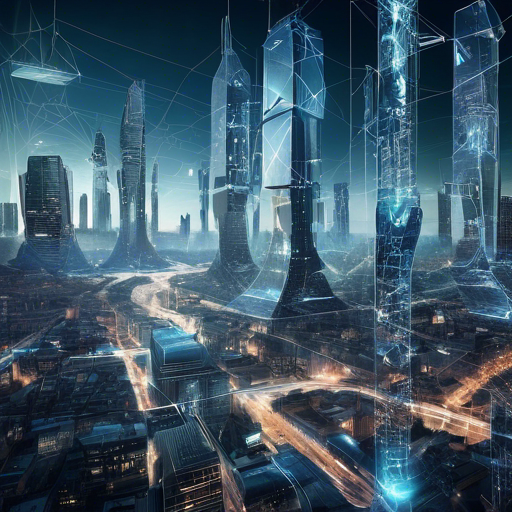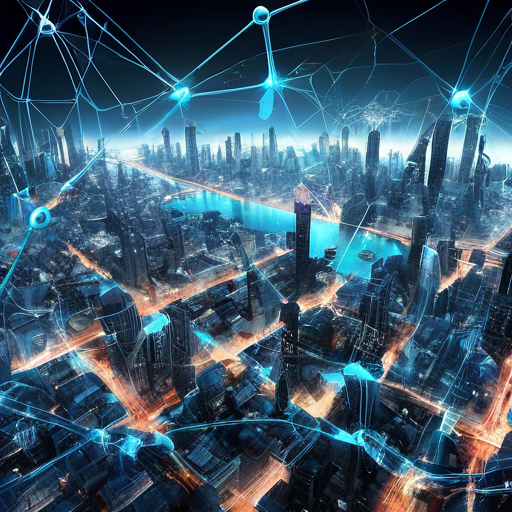Unraveling the Web3 Social Revolution: A Deep Dive into the Future of Social Networking and an LPUD mention

REFERENCE AT THE END OF THIS POST

Introduction
Welcome to the dawn of a new era in social networking, where decentralization, blockchain technology, and token-based economies take center stage. This article will explore the potential of Web3 social networks, the challenges they face, and their readiness to disrupt the current social media landscape. We will also delve into the impact of Web3 social networks on society as a whole, touching upon issues such as digital inclusion, privacy, and online safety. So, buckle up as we embark on this thrilling journey, delving into the world of Web3 social and its transformative power.

The Web3 Social Phenomenon: A Closer Look
Web3 social networks are decentralized, community-owned platforms built on blockchain technology. Their primary goal is to address concerns about data privacy, user autonomy, and content moderation by redistributing control and ownership away from centralized authorities. This shift fosters a more democratic and resilient social ecosystem, where users retain ownership of their data and content and can monetize their contributions directly through token-based incentives and peer-to-peer transactions.
Key Drivers of the Web3 Social Revolution
- Growing discontent with centralized platforms: Users are increasingly concerned about data privacy, content moderation, and the lack of user ownership in Web 2.0 social networks.
- Blockchain technology maturity: The evolution of blockchain technology has made it possible to build large-scale, decentralized platforms.
- The rise of the creator economy: Content creators seek better ways to monetize their work and engage with their audiences.
- Growing interest in digital assets: The burgeoning interest in cryptocurrencies, NFTs, and other digital assets has created a fertile ground for Web3 social networks.
Challenges Ahead for Web3 Social Networks
- Technical hurdles: Building and maintaining decentralized platforms that can scale and provide a seamless user experience is a significant challenge.
- Regulatory uncertainties: Navigating the complex and evolving regulatory landscape is crucial for the development and adoption of Web3 social networks.
- User education: Educating users about the benefits and drawbacks of decentralized platforms and token-based economies is essential for widespread adoption.
- Cultural shift towards decentralization: Achieving mainstream acceptance of decentralized systems requires a cultural shift in how people perceive and interact with social networks.
The Feasibility of Decentralized Social Networks
Decentralized social networks promise a more democratic and resilient social ecosystem, but their feasibility hinges on several factors:
Scalability
Scaling decentralized platforms to support large user bases and handle high transaction volumes is a significant challenge. Solutions like sharding, layer-two scaling, and optimistic rollups are being explored to address these issues.
User Experience
Providing a seamless user experience that rivals Web 2.0 social networks is crucial for attracting and retaining users. Decentralized platforms must strike a balance between decentralization and usability to ensure widespread adoption.
Network Effects
Decentralized social networks must overcome the network effects enjoyed by centralized platforms. Strategies like interoperability, cross-chain compatibility, and strategic partnerships can help level the playing field.
Token-Based Economies: Boon or Bane?
Token-based economies offer several benefits for content creators and users, such as:
- Monetization opportunities: Content creators can earn tokens through user engagement, tipping, and other mechanisms.
- User engagement: Tokens can incentivize user engagement, fostering more active and vibrant communities.
- Decentralized governance: Token holders can participate in platform governance, shaping the future of the network.
However, token-based economies also have their drawbacks:
- Volatility: The value of tokens can be highly volatile, making it difficult for content creators to rely on them as a stable source of income.
- Complexity: The learning curve associated with understanding and using token-based economies can be a barrier to entry for some users.
- Regulatory risk: The regulatory landscape for token-based economies is still evolving, which could pose risks for platforms and users alike.
Blockchain Technology: Ready for Prime Time?
Blockchain technology has made significant strides in recent years, but its readiness to support large-scale social networks is still a topic of debate:
Interoperability
Achieving interoperability between different blockchain networks is crucial for realizing the vision of a decentralized social ecosystem. Cross-chain solutions, bridges, and standardization efforts are underway to address this challenge.
Scalability
Scaling blockchain networks to support large-scale social networks remains an open research question. Innovations like sharding, layer-two scaling, and optimistic rollups are being explored to address these issues.
Regulatory Landscape: A Double-Edged Sword
The regulatory landscape plays a significant role in the development and adoption of Web3 social networks:
Opportunities
Regulatory clarity can provide a stable environment for platforms and users, fostering innovation and investment.
Challenges
Navigating complex and evolving regulations can be a significant challenge for Web3 social networks, potentially slowing down their development and adoption.
Real-World Examples and Use Cases
While it's too early to declare 2024 as the definitive year of Web3 social, several platforms are making strides towards realizing the vision of a decentralized social ecosystem:
- HIVE: A blockchain-based blogging and social media platform that rewards users with cryptocurrency for creating and curating content.
- Peepeth: A decentralized microblogging platform built on the Ethereum blockchain, focusing on minimalism and user ownership.
- Minds: A decentralized social networking platform that rewards users with tokens for their engagement and content creation.
These platforms demonstrate the potential of Web3 social networks to disrupt the current social media landscape, offering users more control, ownership, and privacy in their online interactions.


The Impact of Web3 Social Networks on Society
Web3 social networks, with their decentralized nature and blockchain-based infrastructure, have the potential to significantly impact society as a whole. Here are some of the key areas where Web3 social networks could bring about change:
Digital Inclusion: Web3 social networks can level the playing field by giving power back to the people. Decentralization can help create a more inclusive online environment, where everyone has an equal opportunity to participate and contribute. By reducing the reliance on centralized platforms, Web3 social networks can empower users to create and monetize their content without the need for intermediaries.
Privacy: Web3 social networks prioritize user data ownership and privacy. With the rise of data breaches and privacy scandals in traditional social media platforms, Web3 social networks offer a more secure and transparent alternative. Users have greater control over their data and can choose to keep their information private, ensuring that their personal information is secure and protected from malicious actors.
Online Safety: Web3 social networks also offer enhanced security features, making it significantly more challenging for hackers to access user data. This increased security can lead to a safer online environment, where users can participate in social interactions with greater peace of mind.
Freedom of Expression: Web3 social networks aim to mitigate the issue of censorship by allowing content to be stored and distributed across a peer-to-peer network. This increased freedom of expression fosters a more diverse and inclusive online environment, where users can express their opinions without fear of censorship or retribution.
Direct Rewards for Content Creators: Web3 social networks address the issue of content creators not being fairly compensated for their work. These platforms utilize cryptocurrencies and tokens to enable direct payments from users to creators, ensuring that creative individuals are incentivized to produce high-quality content and can earn a living from their work.

Conclusion
Web3 social networks have the potential to shift power away from centralized corporations and towards a more user-centric and transparent online experience. By placing control over data, reducing censorship, and directly rewarding content creators into the hands of users, these platforms empower individuals in the digital world. As technology continues to develop, Web3 social networks could lead to a more open, inclusive, and user-centric internet experience, where users have greater control over their digital identities and data.


Source
Is 2024 the Year of Web3 Social?

LPUD
In the dynamic world of blockchain and cryptocurrencies, where innovation and community engagement intersect, LeoFinance (InLeo) stands out as a platform that embodies the spirit of collaboration and growth. On March 15, 2024, as part of my ongoing journey with LeoFinance, I participated in the monthly celebration known as Leo Power Up Day (LPUD), powering up over 300 LEO tokens. This act serves as a testament to my belief in the platform and its future.


Blog Banner created by me, using my Canva Pro account
INLEO Animated Divider is courtesy of @ doze
All other images were Dall-E 3 or Photosonic generated using my prompts
Posted Using InLeo Alpha
Posted Using InLeo Alpha
👍